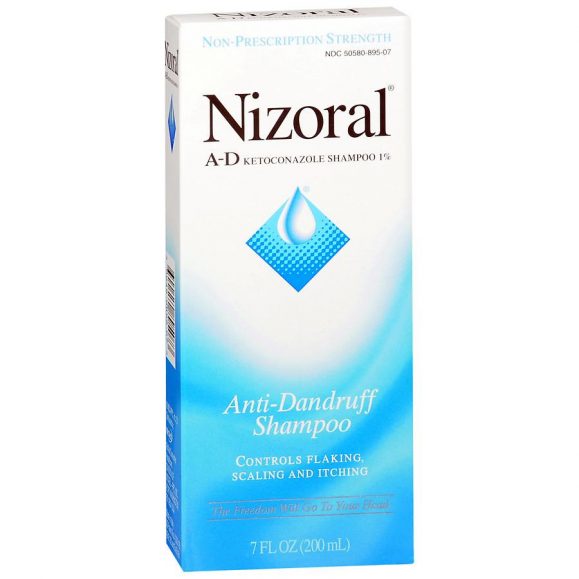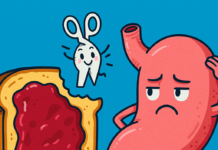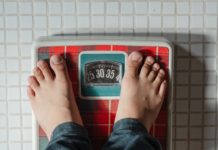According to commercials from the late ’60s, if you have dandruff it can turn you into a social pariah, doomed to wander the earth alone, flaky, and miserable.
This is evidenced by the video gem below. I promise to solve your dandruff problems after you learn some marketing history:
I’ve got one question for ol’ Pam. Why are you keeping your shampoo in the medicine cabinet as opposed to the shower, you weirdo? Ok, enough about Pam and her insanely frothy shampoo.
If you’re someone who has tried everything and still suffers a tortured existence like poor ol’ Pam, get ready to put your learning cap on. Sit down my children and listen to a tale of flaky, itchy, human skin.
Table of Contents
The two main types of dandruff
Regular ol’ boring dandruff
The majority of flaky, itchy scalp is caused by regular ol’ dandruff, affecting half of the population worldwide. That’s like pounds of head-skin y’all.
It is generally categorized by the following symptoms:
- Small, white flakes of skin on the scalp.
- Oily-looking flakes.
- Head feeling tight, sore, and/or itchy.
- Flakes only appear on the scalp.
Seborrheic dermatitis (SD)
This is the more stubborn type! It affects fewer people, a mere 50 million, but it’s more severe and difficult to treat.
It is generally categorized by the following symptoms:
- Larger patches of thicker flakes and redness.
- Covers a larger surface area.
- It can affect other oily areas of the body, such as parts of your face (eyebrows, nose area), upper chest, and back.
- Symptoms are more long term.
This type of dandruff is caused by a yeasty little critter named Malassezia Globosa (image below).

This fungi friend lives on your scalp at all times, feeding on your scalp oils and doing its own thang. However, sometimes it takes over the microbiome on your scalp, causing a ruckus. Additionally, some people’s immune systems, for various reasons, react to the presence of this micro-dude.
This reaction results in inflammation and irritation on the scalp.
So what do you do?
Step 1: Rule out any possible irritants
Fragrance is a horrible, irritating, harsh fiend of a product. Many fragrances are made with synthetic, potentially hazardous chemicals, known to be, “…associated with hormone disruption and allergic reactions, and many substances that have not been assessed for safety in personal care products.”

SWEET! To make matters worse, producers are not required to disclose their ingredients so they can protect their “recipes.” So there’s no way to determine what ingredient you’re allergic to.
I love it when businesses have more protections than individual humans (sarcasm).
To rule out fragrance as the cause:
- Switch all hair products to fragrance-free versions. This includes shampoo, conditioner, leave-in conditioner, hairspray, gels, treatments, dry shampoo…EVERYTHING.
- Use a fragrance-free detergent. Remember, your head spends a lot of time on your pillow!
- Stop use of any perfumes, body sprays, colognes, etc. If your significant other wears any of these, kick them out of the house.
- Just to be safe, don’t use car fresheners, scented candles, room sprays, etc.
- If you notice that your dandruff is localized around your hairline, change your face products to fragrance-free as well.
Step 2: Rule out a dry scalp
If you…
- Wash your hair 1-2x times per day
- Notice more flakes during winter
- Have dry skin
- Use hair products with alcohol
…then you might have a dry scalp. If that’s the case, consider cutting back on the hair washing, using a humidifier in your room at night, removing hair products with alcohol from your routine, and/or utilizing oils as a scalp treatment.
Step 3: Eat a healthy diet
In some studies, vitamin deficiencies have been linked to dandruff and SD. You should be eating a healthy diet anyway, so this just gives you another excuse! Here is a list of nutrients and foods that may improve your scalp health:
- Zinc
- Oysters, beef, chicken thighs
- Tofu
- Hemp seeds
- Niacin
- Tuna, chicken breast, pork chops
- Mushrooms
- Brown rice
- Riboflavin
- Beef
- Tofu
- Milk
- B6
- Salmon
- Chicken
- Tofu
- Vitamin D
- The SUN. Go outside.
- Salmon
- Mushrooms exposed to UV light
- Fortified milk
Step 4: Wash your hair more
If dry scalp has been ruled out, you might be producing too much scalp oil or not cleansing your scalp enough.
The yeasty critters previously mentioned love to nom nom (that means “eat” for anyone under 50) on human sebum (oil) and “poop” out products that cause scalp inflammation. Scalp inflammation can lead to seborrheic dermatitis. The less oil you have on your head, the less food those jerks have to make your life miserable.
Product build-up could also irritate your scalp. So get to cleaning!
Step 5: Use anti-fungal shampoos
There are tons of dandruff shampoos out there. Most of them attempt to strip your hair of excess oils and skin flakes. They may be successful at fighting good ol’ dandruff, but not seborrheic dermatitis.
If you’ve tried dandruff shampoos such as Head & Shoulders or Neutrogena’s T-Sal with no improvement, try an anti-fungal shampoo. Since seborrheic dermatitis is believed to be caused by an evil fungus, you’ll want an anti-fungal shampoo to kill those jerkfaces dead!
There’s only one (that I know of) available over-the-counter and it’s Nizoral. I would suggest using it no more than twice per week, and leave it on your scalp for around 5-10 minutes. If you don’t see any improvement in a few weeks, fungus may not be your problem.

Tea tree oil may also provide benefits for preventing seborrheic dermatitis because it is an anti-fungal. You can add a couple drops of high-quality tea tree oil to your own shampoo or purchase a tea-tree oil shampoo. Other essential oils such as thyme and oregano have been observed to have anti-fungal, antibacterial properties as well.
Anti-fungal treatments not supported by research
There’s a bunch of “hubbub” about apple cider vinegar (ACV) or oils such as coconut, flax, and olive oil curing dandruff. However, I couldn’t find any studies supporting them. Be forewarned, there may be complications in attempting these treatments.
ACV is an antibacterial, anti fungal vinegar that has many uses other than just culinary. However, it is highly acidic and may irritate your scalp or cause burns. Current recommendations are to dilute with water (1-2 tablespoons of ACV per 8 ounces of water) and leave on the scalp no longer than one minute before rinsing.
All of the oils mentioned above have anti-fungal properties as well. However, the very thing the fungus feeds on is oil! Therefore, there have been anecdotal reports of oil treatments improving OR worsening symptoms of seborrheic dermatitis.
Step 6: Rule out food sensitivities
The skin is usually the first organ (yes it’s a really large organ) to show signs that something is wrong. Acne, rashes, psoriasis, eczema, dryness, etc. can sometimes be the skin’s way of saying, “Hey dummy, you’re putting something in here that’s messing up my mojo!”
If you’ve tried everything above and are still suffering, you might want to rule out a food intolerance or sensitivity. You can do this in a couple of ways:
- Remove one of the top food culprits from your diet for two weeks and see if symptoms improve. It’s important to remove them one at a time, or else you won’t know which one is causing your symptoms. Click here for the most common food offenders.
- Analyze your diet! Think about what foods you eat regularly and you’re most addicted to. Bread? Cheese? Alcohol? Often, the food we eat frequently could be the culprit. Try removing that food for two weeks and see if your symptoms improve.
- Keep a food diary complete with symptoms. Track when you have flare-ups so you can rule out the food cause.
The end
So there ya have it folks! Hopefully, something on this list will be able to help you. If you try all of these recommendations and nothing works, consider speaking with a dermatologist. And remember, HALF the population suffers from dandruff so you’re definitely not alone!













